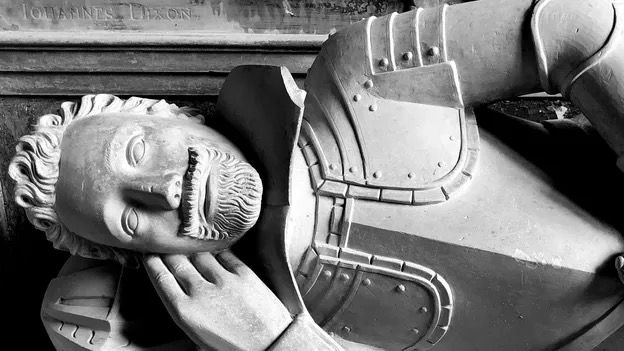Saint George and the English
- Templar Webmaster

- Apr 23, 2024
- 2 min read
April 23rd is St. George’s Day in England, but how did a Turkish born Roman soldier become the country’s patron saint?
Saint George, or Nestor to give him his true name, was born in Cappadocia, Turkey, around 270AD.
According to tradition he became a high ranking Roman soldier, but protested against the mistreatment of Christians by the then Emporor Diocletian.

In 303AD Nester was arrested, imprisoned, tortured, and on 23rd April 303AD he was executed catapulting him to the status of Martyr.
Early Christians changed his name from Nester to George, or George of Lydda, and he later was venerated as a Saint.
By the time of the Crusades the now Saint George was held in particularly high esteem as a military figurehead. A vision of George and Demetrius - Demetrius being George’s older twin brother - at the siege of Antioch preceded the defeat of the Saracens and the fall of the town on the first Crusade. Richard I placed himself and his army under George's protection, and St George was subsequently regarded as the special patron of soldiers.
It was also during the time of the crusades that Saint George also begins to be shown as a mounted dragon-slayer - a depiction probably borrowed from late Egyptian carvings of the god Horus.
And it was these stories that captured the imagination of a young Edward, named after Edward the Confessor, and son of Henry III.
And so it should come as no surprise that when the now King Edward invaded Wales in 1277, inspired by those stories of Saint George atop his steed slaughtering the dragon, he had his troops wear the cross of St George embedding him as a symbol of English power.
Edward would later fly the Saint George’s flag over Caerlaverock Castle when that fell to him in 1300.
Edward’s grandson was also heavily inspired by the Saint George stories that came out of the Crusades. When he became Edward III and created the Knights of the Garter in 1348 he named Saint George its patron and used the image and arms of Saint George within the badge of the Order.
In 1415 - after the battle of Agincourt, when Henry V invoked George as England's Patron Saint - St George's feast was raised in rank to one of the principal feasts of the year. St George remained popular in the post-medieval period, but as there is considerable doubt about the historical veracity of his legend, his cult was reduced to a local one in the reform of the Roman calendar in 1969.
Thanks to the Edwards and at least one Henry the historical symbolism of Saint George within an English context is that of oppression and aggression, which has been further cemented in more recent times by the Natzi regime of the 1930s and 40s - the British Free Corp who were a unit of the Waffen-SS made up of British and Dominion prisoners of war who were recruited by Germany was originally known as the Legion of Saint George - and other far right nationalist movements who continue to use the Saint George flag as a symbol of xenophobia and bigotry has meant the celebrating of Saint George’s Day in England is now somewhat muted and subdued.




Comments